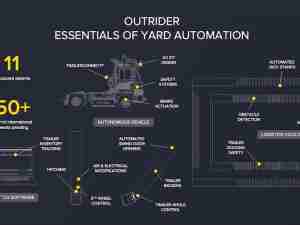Quote from Robert Voltmann on Ferro Resignation, SMS Website Changes Finalized
posted by AJOT | Jul 28 2014 at 08:26 AM | Logistics
FMCSA Administrator Anne Ferro notified agency employees that she will step down from her position at the Department of Transportation in a month, to become President of the American Association of Motor Vehicle Administrators. Ferro was the President of the Maryland Motor Truck Association and also served as Administrator of the Maryland Motor Vehicle Administration before taking the lead at FMCSA.
"Administrator Ferro has been one of the most fair and open of FMCSA Administrators. While we have not always seen eye to eye, Administrator Ferro has always been receptive to the opinions of others. She has served our country well, and we wish her every success in her new role. TIA stands ready to continue to work with the Agency and the Department as we seek to find the right balance of safety and commerce, regulation and freedom to run small transportation businesses," said TIA president and CEO a Robert Voltmann. The Obama Administration has not yet announced an interim Administrator for FMCSA or a nominee for the current position.
This news comes on the heels of the FMCSA announcement on July 24th, regarding information display enhancements on the public Safety Measurements System (SMS) website. The site changes will not alter the methodology or affect a carrier’s safety rating, but will provide the industry and safety advocates with more comprehensive, informative, and regularly updated performance data. The enhancements will be implemented when SMS data is updated on August 2, 2014.
The list of website changes includes:
1. Displaying a summary BASIC status to better clarify if a motor carrier’s performance in the individual BASICs causes it to be prioritized for an intervention. Detailed data, such as the motor carrier’s percentile ranking in each BASIC, has been moved to the individual drill down pages for each BASIC.
2. Offering a new ‘‘Take a Tour’’ feature to highlight enhancements to the SMS display and show visitors how to locate and use the site.
3. Allowing the Web site user to download the data for all of the carriers in the same safety event group used to rank a motor carrier’s BASIC percentile. The SMS determines a BASIC percentile for each motor carrier within a BASIC based on how the individual carrier’s BASIC ‘‘measure’’ ranks relative to other carriers with a similar number of safety events (i.e., inspections, violations, or crashes).
4. Highlighting a motor carrier’s individual performance measure in each BASIC to more clearly identify its performance trends over time. The measure is based on the results of the carrier’s roadside inspections or crashes, and is not relative to other motor carriers in its safety event group.
5. Reordering the display of the BASICs based on their association to crash rates, with the BASICs with the strongest associations at the left.
6. Displaying any motor carrier safety rating from a compliance review (CR) issued in accordance with 49 CFR Part 385. Previously, users had to go to FMCSA’s Safety and Fitness Electronic Records (SAFER) System Web site.
7. Displaying current insurance and operating authority status. Previously, users had to access FMCSA’s Licensing and Insurance (L&I) Online Web site.
8. Providing a motor carrier’s enforcement case history, including the date the case was closed, the applicable violations, and the associated fines.
9. Enhancing the presentation of safety performance over time through a variety of displays and graphs users can customize.
10. Displaying the total number of inspections as well as a breakdown of the number of inspections with violations used in the SMS in each carrier’s detailed information.
11. Clarifying terminology in the SMS, such as the definitions of the terms ‘‘0%’’ and ‘‘greater than 3 inspections with violations,’’ in a new glossary called ‘‘SMS Display Key Terms.’’ FMCSA reviewed and considered all of the comments received related to the preview.
12. Providing a carrier with its own Inspection Selection System (ISS) information, including a carrier’s ISS score, inspection recommendations, and the basis for those recommendations.
13. Providing carrier and driver Out-of-Service (OOS) rates and national averages to allow users to compare an individual company’s OOS rate with the national average for commercial motor vehicles (CMVs).
14. Acknowledging distinctions between BASICS and crash involvement by incorporating BASIC status to crash rate graphs from FMCSA’s SMS Effectiveness Test.
15. Displaying a carrier’s ‘‘doing business as’’ (DBA) name to enhance the search options on the web site.
TIA advocated for and filed comments in favor of including a motor carrier’s safety rating, current insurance and operating status on the SMS website.







_-_28de80_-_d88095865f9f1cbb4ecdd37edf61c63efd603428_lqip.png)

